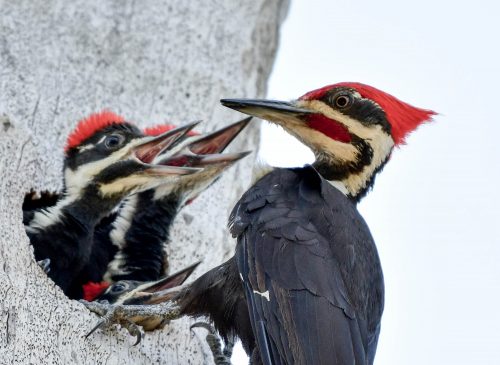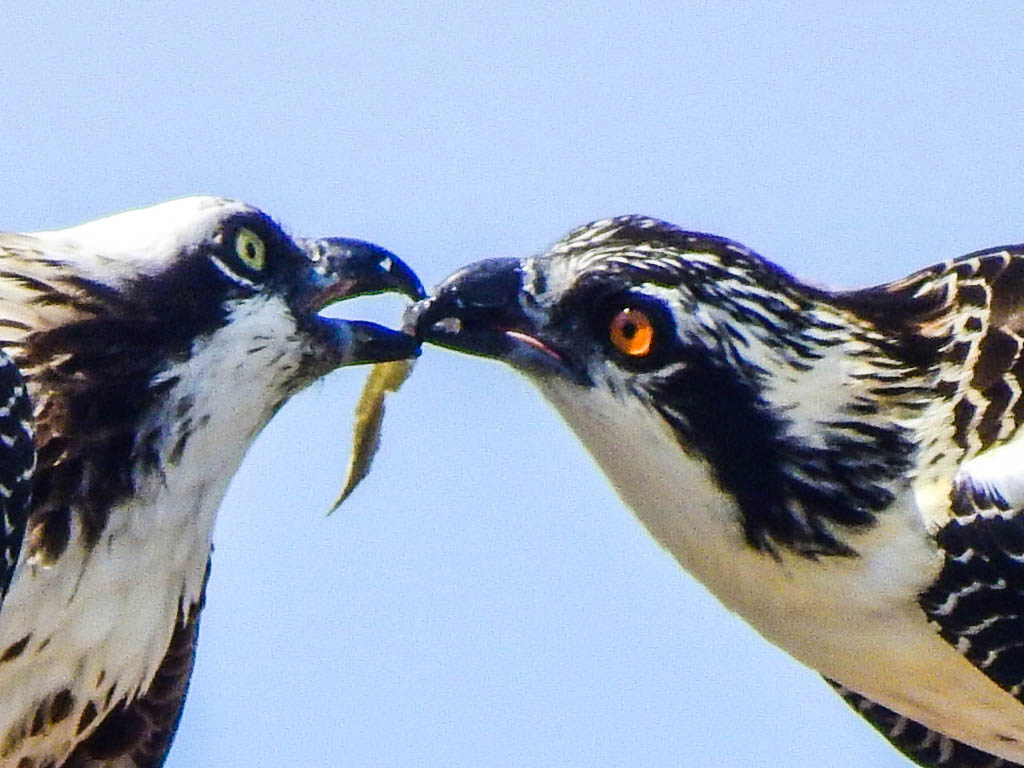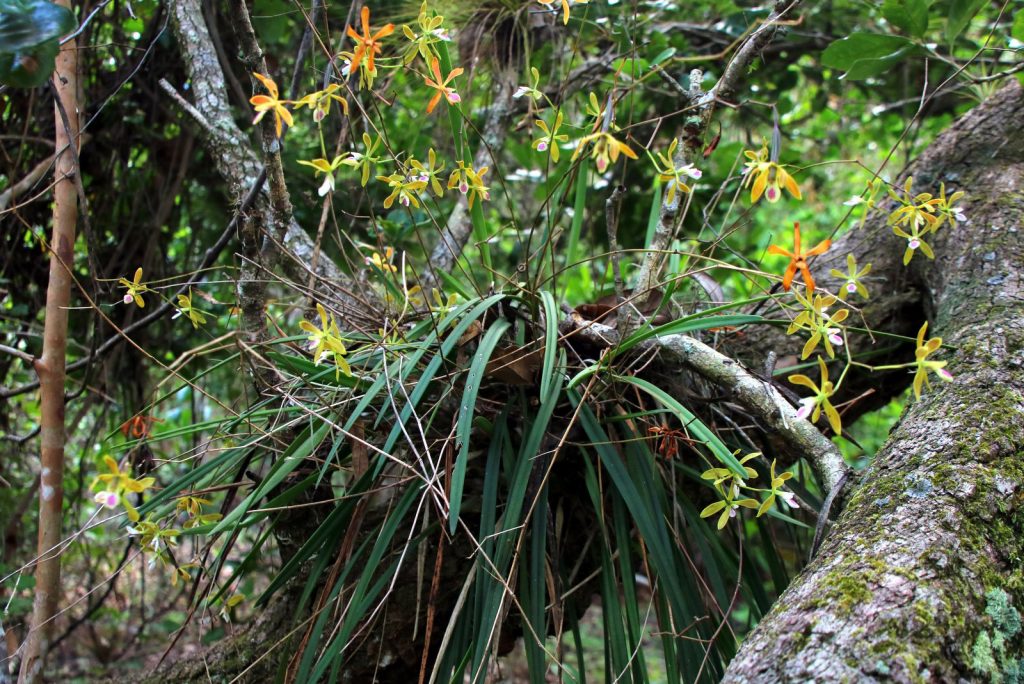Typically, spring months are busy with people on the grounds of the Calusa Heritage Trail. At those times, the soundscape must most resemble the era when Pineland was a busy Calusa town in the 1500s with the hum of conversation, the laughter of children, and hushed tones at the burial mound.
So, when we paused tours, lectures, and research activities and closed the Visitor Center in mid-March in support of efforts to stop the spread of the COVID-19 virus, the human voices went silent. I couldn’t help but reflect on the challenges people before us had surmounted, or succumbed to, at this place. Simultaneously, I noticed how the animals and plants carried on and, in many instances, thrived because of our restoration work.

A pair of pileated woodpeckers raised a brood of three young in a hole in a dead standing tree (snag) that we purposefully created when we removed invasive exotic species from the Smith Mound parcel. Two osprey pairs fledged chicks, one from a nest in a different snag and one from a human-made platform. A yellow-billed cuckoo, perhaps having flown directly from Cuba, found respite during migration among the native trees and was added for the first time to our bird list. A butterfly orchid is blooming deep off the Trail in an area where previously it was thwarted by an overstory of invasive exotic plants that we removed. In these cases, and more, we made thoughtful decisions to support biodiversity through restoration projects. These are reassuring successes as we embark on planning how we will operate in the future amid heightened public health concerns.
The trail is open for walking every day, but for now the restrooms, store, and classroom remain closed for public safety. Staff members Linda Heffner and Kaylin Jablonski continue to work from home while Andy Jendruisak and I remain on the Trail and in the office. And, each day we commit to protecting, preserving, and teaching about the unique archaeology, history, and ecology of Southwest Florida.

